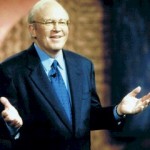Apparently some people do. Okay, lots of people do. But some people are of the opinion that they shouldn’t have to stand in line and have found a way around it. Apparently there is a tour service that will allow you to hire a person with a disability to be your “guide” at Disney. A person with a disability is given speedy if not immediate access to the attractions and will not be required to stand on lines that as we all know can stretch for hours for the most popular rides. And each person with a disability can bring in up to six additional guests with them.
Access to this service, offered by Dream Tours, has been shared person to person amongst those able to afford over $1,000 a day for a guide. When someone contacted Dream Tours to hire a “Tour Concierge” they were asked who referred them. “This is how the 1% does Disney,” is what one rich mom was heard to say. You can read more about the story here:
So what’s all this got to do with human resources? Well, besides the fact that it is wrong and unethical on so many levels, it’s also a sad commentary on the plight of people with disabilities and the fact that it is still tremendously difficult for a qualified candidate with a disability to get a job. People who are able to navigate Disney for eight hours are only being employed to take advantage of their disability. Think about the skills this person must have. Customer service and role-playing skills to get along with and be able to “integrate” into a family for a day. Discretion so as to not give away the deceit. A good memory to store all the knowledge about the various parks. Stamina. Friendliness. A willingness to listen to “It’s a Small World” countless times. And yet at it’s worst, when I think about this scenario, someone being asked to provide a service to a client simply because of who they are or what they have to offer, it borders on prostitution.
It’s a sad commentary that someone thought up this idea. It disgusts me that people with means are willing to use their financial resources to do this. But most of all, I am saddened and disturbed by the fact that employment opportunities for qualified people with disabilities are still so slim that this is all some people think they are good for.
Please pardon my rant, thanks for listening, I welcome your comments.
Only the best,
Ron



